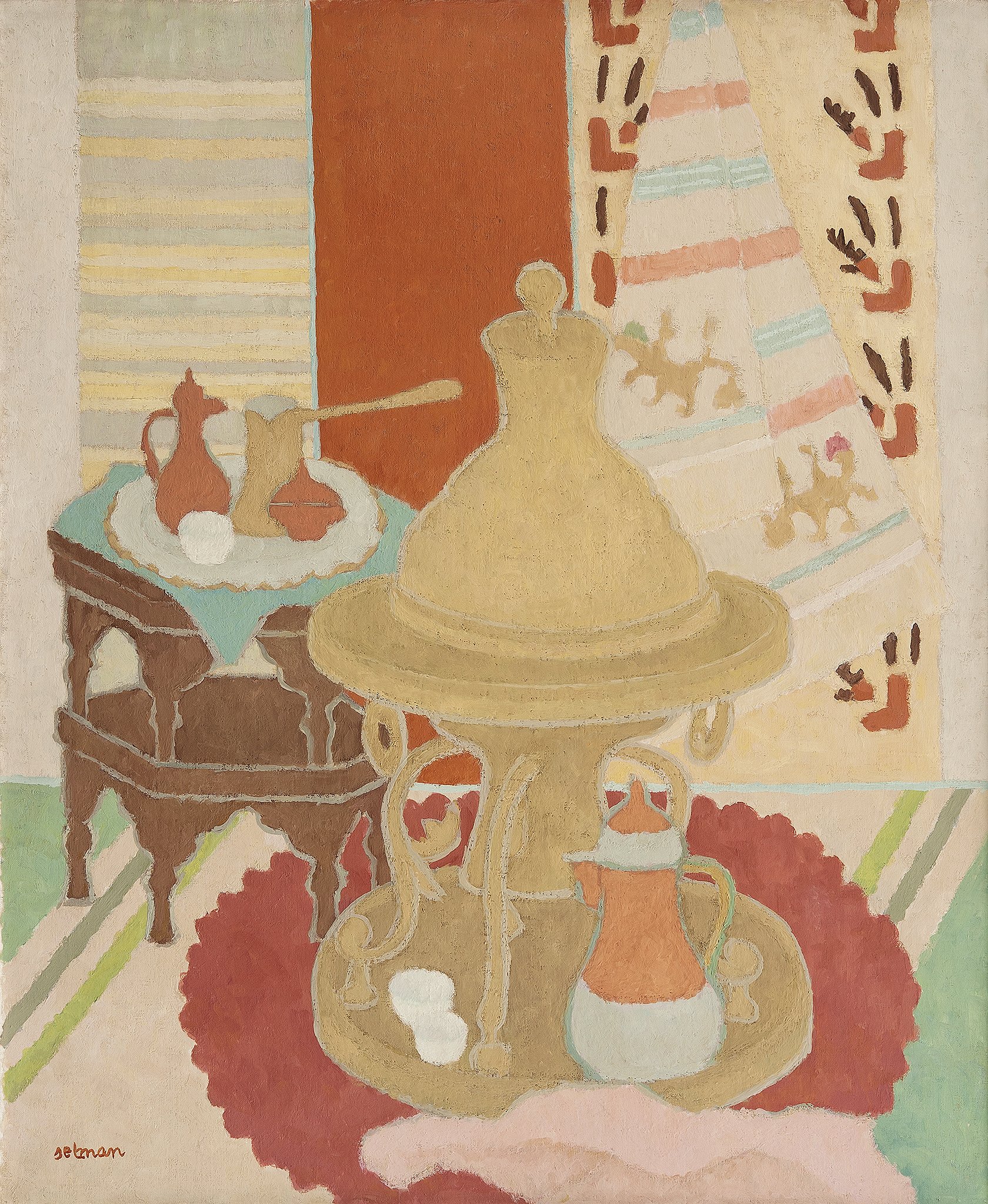
INTIMATE SPACES
Author: Aziz Kadribegović • Illustration: Behaudin Selmanović - “Mangala”, 1967

The last chapter of Ivo Andrić's doctoral dissertation entitled “The development of spiritual life in Bosnia under the influence of Turkish rule”, defended in Graz in 1924, includes the following statement: “The part of the Bosnian population that converted to Islam consisted of the ruling warrior caste during Turkish rule; they spent all their resources primarily on conquest, and then on the defense of their property. The spiritual life of this caste fossilized in the forms of a foreign religion and an unknown language”, to ‘reach the point’ in the final sentence: “In this region as well, the activity of Islam proved to be extremely restraining and unfruitful.”
Of course, Andrić was not the only one who spoke about the extremely obstructive and unfruitful activity of Islam in Bosnia and Herzegovina; however, as the plume of Serbian literature, it was he who encouraged hundreds of epigones, minor writers and academics, who jumped at the chance to continue to develop such and similar hypotheses, believing that underrating Islam and the Islamic contribution to the spiritual and cultural life of Bosnia, without a proper analysis and dispassionate approach, would be a sufficient argument, particularly for those who had already “developed” nationalistic and chauvinist attitudes, attitudes toward the “warrior caste”, the bloody janissaries and reckless raiders of other people's properties.
This exhibition is not aimed at rupturing these and similar prejudices although, over time, due to fairly objective research, many of them have certainly greatly diminished, if not disappeared completely. However, since in the whirlwind of time and political events history repeats itself, and often in a more drastic form (genocide in Srebrenica, i.e. attempts to devastate and destroy an entire nation, with all their spiritual, cultural and material goods), one should remind oneself of this fact over and over again (as it is only ignorance, which actually means oblivion, that is eternal), particularly because of the younger generations, who were not in a situation that would allow them to get the education and necessary knowledge to ensure an appropriate attitude toward society and life at a normal pace and in a normal period of growing up. Besides, artefacts of the tangible and spiritual culture succumb to the ravages of time, and consequently many “exhibits” are available only in the form of photographs or drawings, or in other forms of expression and modalities. Therefore, attempts to re-evaluate them and establish a synchronous or diachronous context, i.e. to revive what appeared to be dead or, at best, dying or decaying under layers of time and tradition, certainly deserve attention and admiration, particularly because such a view is a pioneering step and a great challenge even for the best organized state institutions of culture and science, let alone the Islamic Community.
This endeavor to encompass everything that has pertained to religion, culture and tradition under the sky of Bosnia and Herzegovina “from the cradle to the grave”, and to Islam and Europe in the Bosnian experience, has, from the very beginning, offered such an abundance of material that one simply wonders whether it is possible to present it all, even in outline, within a single presentation of this or similar kind.
It is difficult to only single out a few elements of this great abundance; it includes intimate spaces with the magnificent Bosnian house as its pivot, with all its premises for men and women respectively, with its tall walls which protect it from outside influences and at the same time ensure the flourishing of all aspects of life, with itsshadirvanfountains and fragrant floral decorations, all the way to the tombstones in the gardens, which testify to the acceptance of death as a constituent part of the atmosphere, where birth and death, i.e. the transition to a better world, were equally familiar. And it is between these two aspects, i.e. these two beginnings, that what one calls life, what one calls the call of the faith, what Islam brought to Bosnia and what made Bosnia noble, unfolded.
